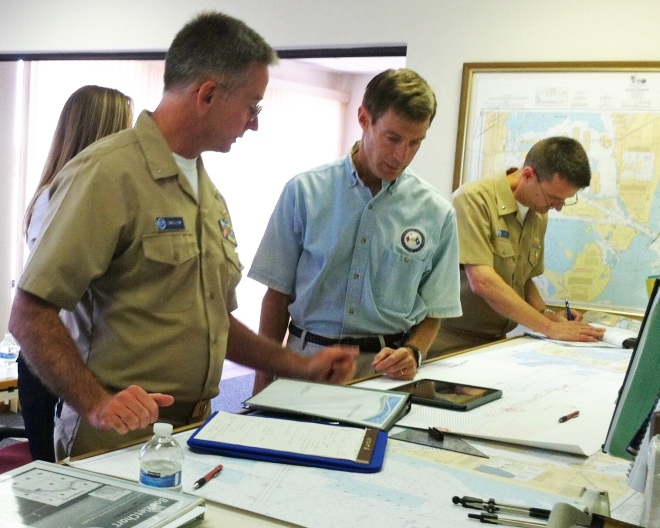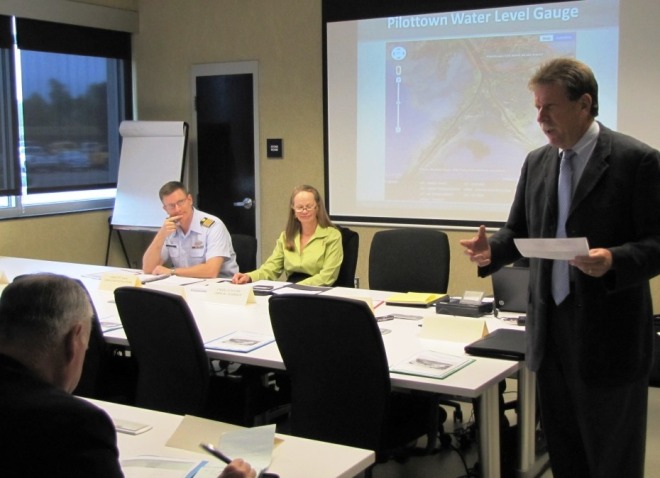We hear about the infrastructure investments that often follow major disasters like hurricanes ‒ the “hard” port resilience strategies necessary in the wake of catastrophic human, environmental, and economic loss. But the sturdiest, most flood-proof building is just one part of a larger system of assets in coastal resilience. We don’t hear much about the “soft” resilience strategies ‒ those that build and maintain ties among the people responsible for responding to a hurricane, for instance ‒ that are important to a successful response. Those strategies are part of the social capital between communities and government, and among government agencies.

Coast Survey navigation managers invest in important soft resilience strategies during their ongoing preparations for hurricane season, building relationships with the private and public partners with whom they will work in a crisis. To quote a spokesperson for the New York Office of Emergency Management, “You don’t want to meet someone for the first time when you’re standing around in the rubble.” Or surveying a dangerous coastal debris field, as the case may be.

Coast Survey navigation managers and navigation response teams have the opportunity to build those relationships when they meet with emergency responders from NOAA and other agencies throughout the year for planning, drills, and tabletop exercises. Navigation managers also sit on U.S. Coast Guard Marine Transportation System Recovery Units, which comprise the experts in maritime mobility, incident response, and port operations who work with stakeholders to reopen ports following a natural or manmade disruption. The units provide a single contact and a clear, efficient pipeline for relaying information to and from Coast Guard and NOAA headquarters to ensure that resources are available at the right place at the right time.

The “right time” is well before a storm hits its coastal target. After a damaging storm, ports may restrict ship travel or shut down completely ‒ so deploying survey ships, navigation response teams, and navigation managers before the storm arrives is critical. For example, four days out, as it becomes more obvious where a storm will hit, the Marine Transportation System Recovery Units assess the likely severity of damage in the forecasted areas. Two to three days out, Coast Survey teams are on the move to pre-position before the storm’s arrival. Because they have been pre-positioned, navigation managers can work directly with the Coast Guard, pilots, and port officials to create a survey plan for detecting underwater debris in order to rapidly “clear” priority areas for the resumption of shipping.
Tensions are high after a hurricane, and resources may be scarce. When people from several agencies are trying their best to get operations up and running, under difficult circumstances, pre-established individual relationships can help to ease the strain and strengthen team bonds. Of course, nothing beats team building like a successful response to an actual storm. (See this excellent report on port recovery in the aftermath to Sandy in 2012.) The lessons learned in one response can be transferable to future responses. As an added benefit, the respect and trust among cooperating agencies, at all levels of government, gives life to the motto of the United States. E pluribus unum: out of many, one.

One Reply to “A “soft” resilience strategy is part of successful hurricane response”